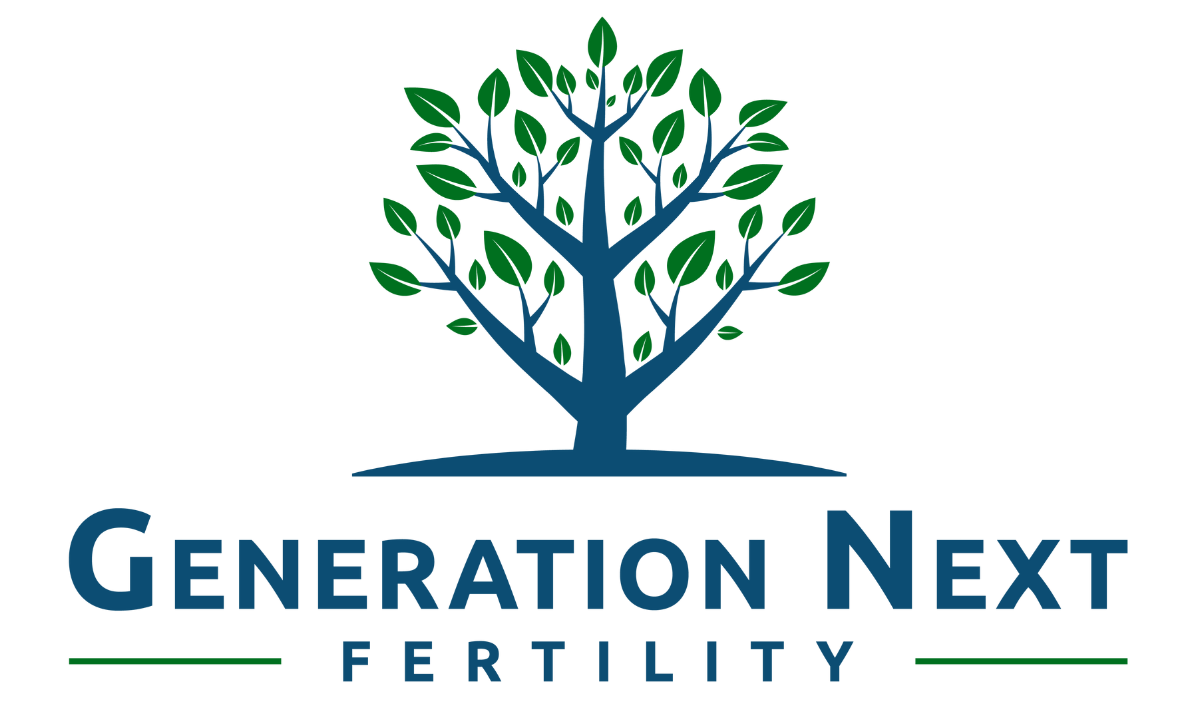OUR SERVICES

Every Fertility Journey is Unique
Whether you’re just beginning to explore your options, preparing to start treatment, or seeking advanced solutions, Generation Next Fertility is here to meet you where you are. Our team combines compassion with expertise, offering personalized care and innovative science to support you every step of the way!
The 4 Things You Need to Make a Baby:
If one of these is missing or not working properly, pregnancy may be difficult to achieve without medical support. That’s why understanding your fertility starts with the right tests.
These tests provide a clearer picture of your reproductive health and help shape the most personalized treatment plan for you.
Conditions That Impact Fertility
Fertility testing may confirm an existing diagnosis, point toward a likely cause, or help identify new factors affecting conception. Wherever you’re starting from, these insights guide the best next steps in your care.









Timed Intercourse and Intrauterine Insemination (IUI) are often the first steps in fertility treatment, often recommended for patients with mild male factor infertility, or when using donor sperm. Both aim to align sperm with ovulation, but differ in how much medical assistance is involved.
Timed Intercourse involves tracking ovulation through ultrasound and hormone testing. Medication may be used to trigger ovulation, and couples are guided on the best timing for intercourse.
Intrauterine Insemination (IUI) involves placing sperm, that has been washed and concentrated, directly into the uterus around the time of ovulation, increasing the chances of fertilization.









In vitro fertilization (IVF) helps eggs and sperm meet outside the body to create embryos, which are then transferred back into the uterus. Our treatments are thoughtfully tailored to each individual, guided by respected physicians, embryologists, and a dedicated care team that’s with you every step of the way!
IVF Stimulation Protocols
The first step of IVF is called “stimulation,” where medications encourage your ovaries to grow more eggs than they typically would in a natural cycle. Because every body responds differently, stimulation is tailored to your needs.
Natural Stimulation relies on the body’s natural cycle with little to no medication. While fewer eggs are produced, the goal is to maximize the egg quality.
Mild Stimulation uses lower doses of medication compared to traditional stimulation. The goal is to have a balance between egg quantity and egg quality.
Traditional Stimulation uses higher doses of medication to maximize egg quantity, typically recommended for those with adequate ovarian reserves.
Luteal Phase Stimulation (LPS) involves additional stimulation in the same menstrual cycle, allowing for two (or more) egg retrievals instead of just one.
Learn more
After stimulation, the egg retrieval procedure is done at our Manhattan location under IV sedation (anesthesia). Once retrieved, the eggs and sperm are combined in the lab. Fertilization is tailored to each patient’s needs to give the best chance of creating healthy embryos.
Fertilization Methods
Conventional Insemination involves placing sperm near the eggs in a lab dish for a natural fertilization.
ICSI (Intracytoplasmic Sperm Injection) involves carefully injecting a single sperm into each egg to assist fertilization.
Selection Methods
PICSI (Physiological ICSI) selects sperm based on biochemical signs of maturity before being injected into the egg.

Zymot is a device that filters sperm by quality and movement, helping select healthier sperm for fertilization.
Fertilization Methods
Conventional Insemination involves placing sperm near the eggs in a lab dish for a natural fertilization.
ICSI (Intracytoplasmic Sperm Injection) involves carefully injecting a single sperm into each egg to assist fertilization.
Selection Methods
PICSI (Physiological ICSI) selects sperm based on biochemical signs of maturity before being injected into the egg.

Zymot is a device that filters sperm by quality and movement, helping select healthier sperm for fertilization.
Once fertilized, embryo development is closely monitored in the lab. Our team updates you at key milestones (Days 1, 3, and 6) to keep you informed every step of the way!
The embryo transfer is the final step of IVF, where an embryo is carefully placed into the uterus using a thin catheter. This typically does not require anesthesia, and most patients can return home the same day.
Watch your embryos develop in real time

Artificial Intelligence Meets Embryology
The CHLOE™ Embryoscope offers video live streaming directly from incubators to your phone. Receive AI-driven cycle reports with insights into what’s happening in real time, along with a timelapse video of your embryo’s time developing in the incubator.









Egg freezing allows eggs to be retrieved and preserved for future use. Many patients choose egg freezing to keep future family-building options open while focusing on their careers, education, or personal goals. By preserving eggs at a younger age, egg freezing can provide more flexibility in planning for the next stage of life.
Stimulation Protocols
Medications stimulate the ovaries to produce multiple eggs, which are then collected during a short procedure and frozen at their current age and quality.

Mild & Natural Stimulation involves collecting eggs with little to no medication, or with lower doses of sttimulation. This may be considered for patients with limited time, lower egg counts, or those who prefer a gentler option.

Traditional Stimulation uses higher doses of medication to maximize the number of eggs that can be retrieved. This is the most common stimulation protocol for egg freezing, as it can build a larger reserve for future use.

Luteal Phase Stimulation (LPS) allows for a second round of stimulation in the same menstrual cycle, leading to two egg retrievals instead of one. This can help patients collect more eggs in a shorter timeframe.
After the egg retrieval, mature eggs are rapidly frozen using vitrification, a flash-freezing method that helps protect their quality. Frozen eggs are stored in liquid nitrogen at ultra-low temperatures, where they can remain preserved for many years until needed. When the time is right, frozen eggs can be thawed, fertilized in the lab, and transferred to the uterus through IVF.
Get Free Egg Freezing with the 50/50 Program

Half for you,
Half for a family in need
Our 50/50 Egg Freezing Program gives patients the opportunity to freeze their own eggs while also helping another family through egg donation. Half of the eggs retrieved are frozen for your future use, and half are donated to a family in need. In return, you’ll receive egg freezing at no cost, plus one year of complimentary storage.









Fertility Rejuvenation therapies use a technique called Platelet-Rich Plasma (PRP). A small amount of your own blood is processed to concentrate its natural healing components (platelets), and is then placed into the ovaries or uterine lining with the goal of creating a more supportive environment for conception.
Endometrial PRP is placed in the uterine lining, with the goal to create a more receptive environment for implantation.
Ovarian PRP focuses on improving the ovarian environment, with the goal of supporting egg and follicle development.
Discounted IVF for Research Participants
PRP has been safely utilized in multiple fields of medicine for decades. Its application in fertility medicine, however, is new. Generation Next Fertility is conducting the first clinical studies worldwide to evaluate how Ovarian PRP may be applied to support ovarian health and embryo development.
Please Note: The listed prices for the following studies reflect the self-pay rate. Depending on your insurance plan, select services may be partially or fully covered. Please contact us for details about your specific coverage.
This clinical trial tests Ovarian PRP against placebo to study its safety and effects on ovarian function and assess whether it improves IVF outcomes.
You may be eligible if you have DOR, POI, or Failed IVF history. Participants may or may not receive PRP.
Pricing Note: $12,000 is the self-pay rate, select services may be eligible for insurance coverage
This clinical trial uses CHLOE™ AI imaging technology to assess how Ovarian PRP may influence embryo development and quality.
You may be eligible if you have not been diagnosed with DOR. All participants receive PRP.
Pricing Note: $17,500 is the self-pay rate, select services may be eligible for insurance coverage









Sometimes building a family involves the help of others. This may include donor eggs, donor sperm, or the support of a gestational carrier. These options are available to individuals and couples facing infertility, LGBTQ+ patients, and anyone who needs assistance to achieve pregnancy.
Donor Eggs can be fertilized with partner or donor sperm to create embryos for transfer. This option helps overcome challenges with egg quality or supply.
Donor Sperm can be used for IUI or IVF to achieve fertilization. This option helps address male factor infertility and gives patients another path to parenthood.
Gestational Carriers carry the embryo created through IVF. This makes parenthood possible for patients who cannot safely carry a pregnancy themselves.
LGBTQ+ Family Building options include reciprocal IVF, donor eggs or sperm, and gestational carriers: ensuring that each family has an accessible path to parenthood.










Luteal Phase Stimulation (LPS)
Luteal Phase Stimulation (LPS) allows for two egg retrievals within the same menstrual cycle, increasing the total number of eggs collected. This approach is especially beneficial for patients with Diminished Ovarian Reserve (DOR), offering an opportunity to maximize their chances of success in a shorter timeframe.
Platelet-Rich Plasma (PRP) Services
Traditional IVF Treatment is a form of in vitro fertilization using high stimulation that’s designed to help couples overcome issues of infertility.
At Generation Next Fertility, we are committed to redefining the
future of embryology technology, setting new standards in
monitoring and care.
Precision IVF
CHLOE™ and Time-Lapse Monitoring for Your IVF Journey
• Exclusive access to advanced reproductive technologies.
• AI-driven lab monitoring and time-lapse imaging for optimal care.
• Peace of mind with cutting-edge tools supporting your fertility journey.
• Designed to give your dream of parenthood the highest level of care.


CHLOE Embryo Viewer
• CHLOE Embryo Viewer: Real-time video streaming of embryo development.
• Direct connection from incubators to your screen.
• Provides visibility into your embryos’ development and process.
• Empowers you with more knowledge and involvement in your journey.
• Access to Embryo Development Viewer and Cycle Report with fertilization and cycle summaries.
Talk to us today to discover how CHLOE Embryo Viewer can connect you to your journey in a powerful, personalized way
Third Party Reproduction
Traditional IVF Treatment is a form of in vitro fertilization using high stimulation that’s designed to help couples overcome issues of infertility.

Egg Freezing
The peak of a human being’s career is usually in their late 30s and it takes time to get there. If during this journey you have not found your significant other, egg freezing becomes a tool for your next stage in life.

Intrauterine Insemination
IUI is usually the next step to take after you have been unable to get pregnant via intercourse with a partner.
On the day of the insemination, the sperm is prepared
by our andrology team two hours prior to the
insemination, so in the event that your partner will be providing the sample, he will have his own appointment time.
Timed Intercourse
In a timed intercourse cycle, you will be monitored at our beautiful Midtown East office through bloodwork and ultrasound to see approximately when you will be ovulating, and the physicians can then recommend which days would be best to have sexual intercourse. Timed intercourse can either be medicated or unmedicated.

































